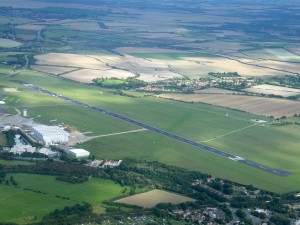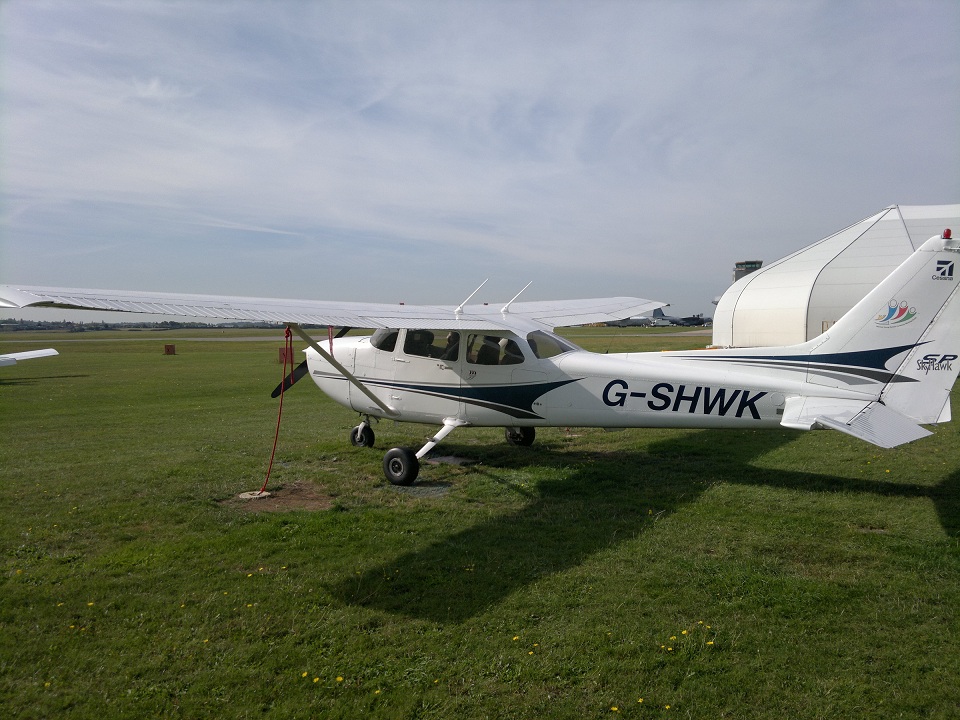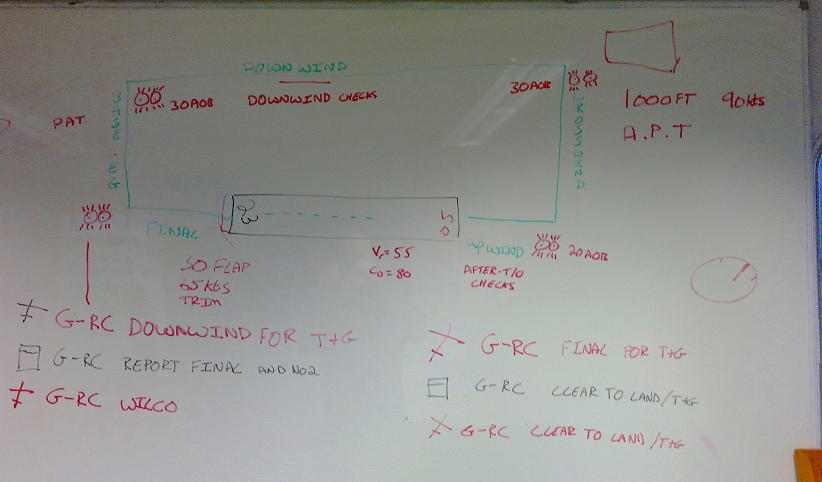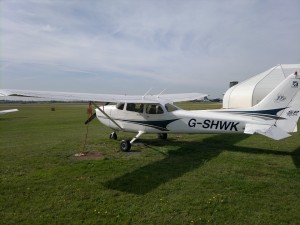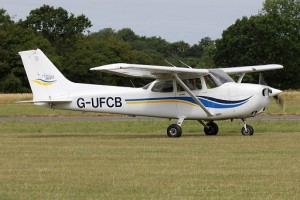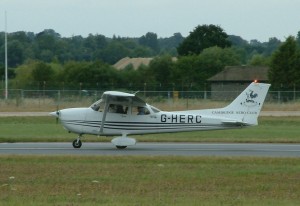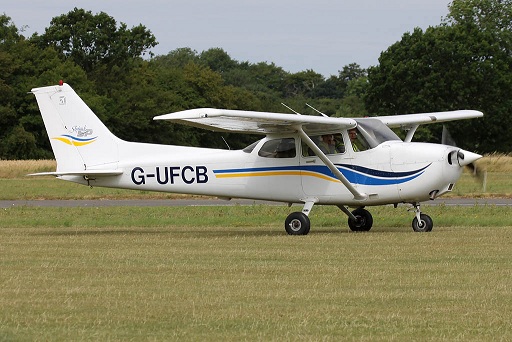If you can’t go flying at Christmas, then the start of the new year, just before going back to work is the next best thing…….and this lesson would turn out to be a very good one indeed!
I’d phoned ahead to see who I’d be flying with, after a run of flying with new instructors I was keen to be flyng with someone I’d flown with before and thankfully this was the case.
Briefing
Generally already covered in my previous post, but to sumerise the objective was to essentially do laps of the airport. There’s a lot going on inside the circuit: pre-landing checks, radio calls, other planes to watch out for and of course the task of setting the plane up for landing etc.
My instructor on this lesson, I’ve found, likes doing things accurately and by the numbers – I can’t really describe how that’s different from any other instructor – but you just get a sense of “precision is key – we’ll go no further until I’m happy you’re accurate” (some other instructors lean towards chucking you in closer to the deepend and seeing how far you get).
This desire for precision was pressed home in the briefing with the statement of “You’ll fly to downwind and I’ll do the rest until I’m satisfied you’re doing that right.” At which point in my mind I concluded this lesson was destined to be one broken up into multiple lessons (e.g. Take off & Downwind / Base Leg / Final).
Still we’d see how the gods of flight felt today, to my instructors credit you never feel like you’re getting held back or wasting your time – he talks with a reassuring confidence that you are going to get it and soon be on your way.
So the initial plan: I’d do the take-off, crosswind and turn to down wind section – he’d take over and do the rest, then as things got tidier I’d fly more and more of the circuit.
Plane Checkout / Taxi
Todays plane: G-SHWK, still had a broken port-side navigation light, but other than that looking like it’s normal tip-top form. The tyres perhaps starting to look like they’ve seen better days, but it’s only just landed with my instructor, so I’m happy if he’s happy.
20 Gallons in the right tank, 15 in the left – the wind is picking up and I know in my mind that if it gets much higher there’s a risk we’ll be bailing on this lesson sooner then I’d like.
The tower sound like they’re in good spirits today (excellent news, because by the time we’re done with them, “Golf Wiskey Kilo” is going to be a sound they’re sick of hearing).
During the power into wind checks, the parking brake decides it’s not actually fully on and the plane rolls fowards – a quick jump on the toe brakes and we’ll try pulling a bit harder on the brake leaver shall we
As we get our departure clearance, we’re ushered to get on with it, so my instructor takes the controls to get us lined up quickly…..
Take Off
The second we’re lined up “You have control…..” giving me the green light to get on with getting us off this soon to be shared stip of tarmac.
Throttle open, quite a bit if rudder work to keep it straight today due largely to the wind, the airspeed indicator comes alive and in no time at all: 55 knots, time to rotate (collective opinion does indeed seem to be 55).
As we take off, I get reminded to level the nose to allow me to see how good/bad a job of flying straight I’m doing and to aid in bringing the speed up to 80 knots before pitching it properly into a climb.
Second thing I’m reminded of is to keep my hand on the throttle incase it slips (taking my hand off is something I tend to do, it’s almost instinctual to want your hands on the control column)
200ft : After Landing Checks:
- Flaps : Up
- Engine: Temperature & Pressures in the Green
- Landing Light : ON, we’ll be leaving it there because in 5 minutes we’ll be landing again 🙂
Circuit #1
500ft :
- Nothing on our right
- Nothing on our left
- Begin the turn at 20 degrees (and no more) bank to the left, climbing to a 1000ft (circuit height)
I’ve posted before that my first climb of the day is notoriously rubbish (tendancy to overshoot) and this climb is no exception, we overshoot by 150/200ft. Still nothing you can’t fix with a little less power.
The turn on to downwind was fine – followed by my instructors taking over the controls.
He does the radio call and then sets us up on the approach to show what the perspective should look like, when done right.
Circuit #2
No sooner than touching down: “You have control”, he’s raised the flaps already so it’s on with full power, holding it straight and it’s only a matter of seconds before we’re back in the air.
I still forget to keep my hand on the throttle, arrrgh.
After take-off checks are faster, the climb is much better this time and we level out a lot closer to the money – all round just better, nerves and such like have begun to settle a bit as well.
I get to do the radio call and response before handing controls back to my instructor.
This time he demonstrates a “to low” approach, we descend to 400ft on the base leg (putting us about 200ft lower then we should ideally be at for this point). It gives a good indication of how ‘flat’ the runway perspective becomes when you’re low.
Cambridge Airport has the added advantage of a Precision Approach Path Indicator (PAPI) – essentially 4 lights angled so that at 3 degrees (glide slope for jets) you should have 2 red and 2 white, if you’re high you’ll get more white, to low – more red. For light aircraft though, you want something around 3 white, 1 red (a touch high relative to 3 degrees)…… I’ve read online others argueing that you should fly the glideslope (3 degrees), perhaps it’s a topic of debate among instructors, my instructor says 3 degrees is “not us” so I’m going with that – I’m not here to argue with an instructor unless I feel they’re endangering my safety and two things make you safe in an airplane: Height and Airspeed – so I’ve no problem approaching with a little bit of height on my side.
We touch down, my instructor raises the flaps and hands control back to me for the take-off.
Circuit #3
By this point I’m feeling much more into the rhythm, although on climb out I still take my hand off the throttle (only to be reminded by a vigilant instructor…..). I remove my mental post-it note to keep my hand on the throttle and replace it with an engraved note written in tablets of stone – we won’t be doing that again!
But the climb out is good, 200ft the check list is more like an instinct then a thought process – which is good, checklists are easy to memorise, but try recalling them while flying, with background noise and no time.
Turning climb up to circuit height is really good, 1000ft give or take 20-50ft.
On downwind my instructor asks me to go through the before-landing checklist: Brakes, Mixture, Fuel, Hatches, Harnesses, Autopilot.
But as we fly downwind there’s another plane just about to start final approach, this compromises our seperation if we were to keep going and turn on to the base leg. Rather than extend the downwind leg, which as my instructor said would change the view of the approach I’d get which he didn’t want to do, he radioed the tower to request permission to do a right orbit (360 degree turn). This would buy the other plane some time and when we completed the orbit we’d be back on the downwind leg pretty much where we’d started.
This time my instructor holds off taking off the power on the base leg, keeping us high, we come in at around 800ft. The PAPI is all white and visually we’re clearly well above the correct runway perspective – rather than approach it, you feel like you’re going to have to drop onto it.
On touch down my instructor calls “You have Control”, I accept control, glance at the flaps and realise he’s not raised them – so I reach over, raise the flaps and then put on full power to get us back up.
Circuit #4
This time my take-off is good, the climb up to circuit height is good the checks are all pretty smooth.
Turning on to downwind I’m asked to do the radio call to announce our intention:
“Golf Wiskey Kilo, downwind for Touch and Go”
“Golf Wiskey Kilo, report final.”
“Wilco, Golf Wiskey Kilo”
Simple as that, the last one is just an abbreviation for “Will Comply”
On the base leg I’ve been making mental notes of where to start taking off the power, position of the runway etc. This time I get to do the turn on to the base leg and start putting the notes into action.
My instructor flys the final approach.
From almost the moment we touch down it’s all over to me – all that’s left in the list of things I haven’t done now, is land it.
Circuit #5
By this point getting the plane up and on to the downwind leg is pretty much a given activity – but I keep reading out what I’m doing or about to do just to ensure my instructor feels like it’s under control.
The downwind checklists and radio calls are all over to me, and they go nice.
Turning on to the base leg, pretty soon it’s time to take off the power, lower the flaps to 20 degrees and bring the plane down to 600ft. All of this goes off without any issues.
One last turn on to final, but this time I’m flying it down the approach – aiming to keep the runway roughly “1 fist above the instrument panel”. 300ft, it’s going well, 200ft still lined up give or take, a bit of rudder just to keep it from being blown off course but generally still looking good. 100ft, 50ft…..I hear my instructor say “now fly it down the runway, then begin to flare”. A firm but by no way unhappy thump of the main landing wheels hitting the runway suggest we’re down – I lower the nose wheel on to the runway and my instructor says the words I’ve spent a lot of hours waiting to hear
Congratulations you’ve just done your first landing.
No time to celebrate though, we’re doing a touch and go and currently have the flaps down and are doing 20-30knots down the runway. Time to focus on getting back in the air!!
Circuit #6 – Final for Landing
Excitement / Addrenalin can do some fun things to your head, getting the airplane back in the sky was no problem. However, no matter how much I kept thinking “focus on flying….” and trying to hush the noise of “wasn’t that a good landing!” going off in my mind. It kept coming back and the net result was that I found myself staring at the altimeter going “hmmm this climb is taking a while, only at 100ft……isn’t the altitude going up slow.” All while holding an airspeed of 80knots and plane nose pointing skyward!
At 200ft I should have been doing after take-off checks, at 500ft I should have been turning on to the crosswind leg…….but I kept looking at the dial and it was just creeping towards “1”.
“So are you goin to turn then?” Came the voice of my instructor. That snapped me out of it, I looked back at the altimeter to work out what he meant – oh the altimeter was creeping for sure, creeping towards 1000ft, not 100! It currently read 600ft.
If you ever wanted to know “how did that pilot not realise he was losing airspeed….or wasn’t climbing….or made mistake X, Y, Z….” I’ve just had a master class in how the brain can merily wonder off and stop making sense of the information before it.
Everything from here on in went smooth though, nice radio calls, good turns, a nice flight down to 600ft without any real overshoot on the turn on to final.
To the best of my memory the radio call to land was mine, but with the excitement of “I’m going to land this again….” and everything else, I’ve susequently forgotten who did what.
Touching down spot on the centre, this was as good a landing as I’ve ever been in before. Smooth, just past the numbers and centred….. all that and I can walk away from it. A good landing by all measures.
Debriefing
Nothing much to note, no concerns on my flying, the usual odd note on ‘try to remember….’ But all in all, a good days flying with a lot more achieved then I’d first expected to get done on this lesson.
After many hours / lessons though, it’s nice to now be doing all phases of flying (Take-Off, Climb, Cruise, Descent, Landing). Perfect all of the above and then throw in some navigation…..
